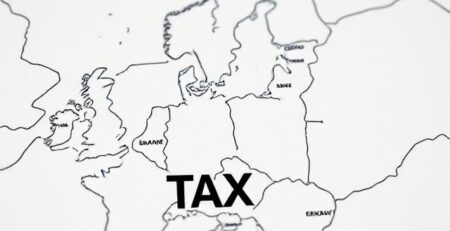Zone Wise Direct Tax Collection in India FY25: Regional Revenue Patterns and Economic Insights
Introduction
The zone wise direct tax collection in India FY25 presents a fascinating landscape of economic activity and revenue generation across different regions. Understanding these patterns provides crucial insights into India’s economic geography, business concentration, and regional development dynamics. The latest data reveals significant variations in tax contributions, with Mumbai maintaining its dominance while other regions show distinct patterns of growth and contribution.
Direct tax collection serves as a reliable indicator of economic activity, business performance, and individual income levels across different zones. The Financial Year 2025 data showcases how metropolitan areas continue to drive India’s tax revenue, while also highlighting the emerging contribution of other regions to the national exchequer.
Mumbai: The Undisputed Tax Revenue Champion
Mumbai’s commanding 29% share in zone wise direct tax collection in India FY25 reinforces its position as the country’s financial capital. This substantial contribution reflects the city’s concentration of corporate headquarters, financial institutions, and high-net-worth individuals. The Mumbai tax zone encompasses not just the island city but also extends to surrounding areas that house numerous multinational corporations and domestic business giants.
The dominance of Mumbai in direct tax collection stems from several factors. First, the city hosts the headquarters of major banks, insurance companies, and financial services firms. Second, the presence of stock exchanges and capital markets generates significant capital gains tax. Third, the real estate sector’s robust performance contributes substantially through property transactions and rental income declarations.
Mumbai’s tax collection efficiency also benefits from better infrastructure for tax administration and higher compliance rates. The concentration of chartered accountants, tax consultants, and financial advisors ensures better tax planning and filing practices. This professional ecosystem supports both individual taxpayers and corporations in meeting their tax obligations effectively.
The 29% contribution from Mumbai zone also reflects the city’s role as a gateway for international business. Foreign direct investment flows, export-import activities, and international financial transactions all contribute to the tax base. The presence of special economic zones and export processing units further enhances the direct tax collection from this region.
Delhi: The Political and Administrative Hub’s Tax Contribution
Delhi’s 21% share in zone wise direct tax collection in India FY25 positions it as the second-largest contributor to the national tax kitty. As the national capital and seat of government, Delhi attracts businesses seeking proximity to policy makers and regulatory authorities. The Delhi tax zone benefits from a unique combination of government employees, private sector professionals, and entrepreneurial ventures.
The capital city’s tax collection reflects its diverse economic base. Government salaries contribute significantly to income tax collection, while the thriving services sector, including IT, consulting, and professional services, adds substantial corporate tax revenue. The presence of numerous trade associations, industry bodies, and corporate offices further boosts the tax collection figures.
Delhi’s real estate market also plays a crucial role in direct tax collection. Property transactions, both residential and commercial, generate significant tax revenue through capital gains and wealth tax. The city’s status as a preferred destination for high-net-worth individuals and business families contributes to higher tax collections.
The administrative advantages of Delhi cannot be overlooked. Direct access to tax authorities, easier resolution of tax disputes, and proximity to policy changes enable better tax compliance. The concentration of tax practitioners and advisory services also supports efficient tax collection from this zone.
Karnataka and Goa: The Southern Powerhouse
The combined contribution of Karnataka and Goa at 11% in zone wise direct tax collection in India FY25 highlights the growing importance of southern India in the country’s economic landscape. Karnataka, led by Bangalore’s IT boom, has emerged as a significant tax contributor, while Goa adds its unique economic profile to this zone.
Bangalore’s transformation into India’s Silicon Valley has revolutionized Karnataka’s tax collection profile. The city hosts numerous IT companies, both domestic and international, contributing substantially to corporate tax revenue. The high-paying IT jobs have also boosted individual income tax collections, with software professionals forming a significant portion of the tax-paying population.
The pharmaceutical and biotechnology sectors in Karnataka add another dimension to direct tax collection. Companies like Biocon, Infosys, and Wipro not only pay substantial corporate taxes but also contribute through their employees’ income tax payments. The state’s focus on research and development has attracted numerous multinational companies, further enhancing tax collection.
Goa’s contribution, though smaller in absolute terms, is significant considering its size. The state’s tourism industry, mining activities, and emerging IT sector contribute to direct tax collection. The presence of wealthy residents and seasonal inhabitants also adds to the individual income tax collection from this zone.
Pune: The Educational and Industrial Hub
Pune’s 6% contribution to zone wise direct tax collection in India FY25 reflects its evolution from an educational center to a major industrial and IT hub. The city’s tax collection benefits from its diversified economic base, including automobile manufacturing, IT services, education, and emerging sectors like biotechnology and aerospace.
The automobile industry’s concentration in Pune significantly impacts direct tax collection. Companies like Tata Motors, Bajaj Auto, and numerous component manufacturers contribute substantial corporate taxes. The sector’s growth has also created numerous high-paying jobs, boosting individual income tax collection.
Pune’s emergence as an IT destination, often called the “Oxford of the East,” has added a new dimension to its tax profile. The city attracts both domestic and international IT companies, creating a robust ecosystem of technology professionals who contribute significantly to income tax collection.
The educational sector’s presence, with numerous engineering colleges and management institutes, creates a unique economic environment. While educational institutions may have tax exemptions, the ecosystem of supporting services, faculty salaries, and student spending contributes to the overall tax collection.
Tamil Nadu: Industrial Legacy and Modern Growth
Tamil Nadu’s 6% share in zone wise direct tax collection in India FY25 represents the state’s balanced industrial development and growing services sector. The state’s tax collection reflects contributions from traditional industries like textiles and automobiles, as well as emerging sectors like IT and healthcare.
Chennai, the state’s capital, serves as a major contributor to Tamil Nadu’s tax collection. The city’s automobile industry, often called the “Detroit of India,” generates substantial corporate tax revenue. Companies like Hyundai, Ford, and numerous component manufacturers have established significant operations, contributing to both corporate and individual tax collections.
The IT sector’s growth in Chennai and other cities like Coimbatore has added a new dimension to Tamil Nadu’s tax profile. The state has successfully attracted IT companies through favorable policies and infrastructure development, resulting in increased direct tax collection from this sector.
Tamil Nadu’s textile industry, while traditional, continues to contribute significantly to tax collection. The state’s position as a major textile exporter generates substantial revenue, contributing to corporate tax collection. The industry’s modernization and value addition efforts have maintained its relevance in the tax collection scenario.
Gujarat: The Entrepreneurial State’s Tax Contribution
Gujarat’s 5% contribution to zone wise direct tax collection in India FY25 reflects the state’s entrepreneurial spirit and industrial development. Known for its business-friendly policies and industrial infrastructure, Gujarat has created a conducive environment for tax collection growth.
The state’s chemical and petrochemical industries form the backbone of its tax collection. Companies like Reliance Industries, ONGC, and numerous chemical manufacturers contribute substantially to corporate tax revenue. The sector’s growth and expansion have created numerous employment opportunities, boosting individual income tax collection.
Gujarat’s pharmaceutical industry adds another dimension to direct tax collection. The state hosts numerous pharmaceutical companies and is a major contributor to India’s generic drug production. This sector’s growth has enhanced both corporate and individual tax contributions from the state.
The textile and diamond industries, traditional strengths of Gujarat, continue to contribute to tax collection. While these industries face global competition, they remain significant contributors to the state’s tax profile through their export earnings and domestic sales.
Andhra Pradesh and Telangana: The Divided State’s Tax Dynamics
The combined 5% contribution of Andhra Pradesh and Telangana to zone wise direct tax collection in India FY25 reflects the economic dynamics following the state’s bifurcation. Both states have pursued different development strategies, contributing to direct tax collection in unique ways.
Telangana, with Hyderabad as its capital, has focused on IT and biotechnology development. The city’s IT sector, led by companies like Microsoft, Google, and Facebook, contributes significantly to direct tax collection. The state’s emphasis on creating a startup ecosystem has also begun showing results in tax collection terms.
Andhra Pradesh has pursued industrial development and infrastructure creation. The state’s new capital, Amaravati, represents significant investment and development activity. The pharmaceutical industry’s presence and the state’s focus on renewable energy have created new avenues for tax collection.
Both states benefit from their skilled workforce and educational institutions. The presence of premier institutes like IIT Hyderabad and various engineering colleges creates a talent pool that supports both IT and industrial sectors, contributing to direct tax collection.
Regional Analysis: Understanding Tax Collection Patterns
The zone wise direct tax collection in India FY25 reveals several important patterns about India’s economic geography. Metropolitan areas continue to dominate tax collection, reflecting their concentration of economic activity, higher income levels, and better tax compliance infrastructure.
The data shows a clear urban bias in tax collection, with major cities contributing disproportionately to direct tax revenue. This pattern reflects India’s economic structure, where urban areas generate higher value-added activities and attract skilled professionals who fall into higher tax brackets.
The services sector’s contribution to tax collection is evident from the high shares of Mumbai, Delhi, and Bangalore-centric zones. The IT revolution has significantly impacted tax collection patterns, with technology hubs showing strong growth in direct tax contributions.
Manufacturing centers also show significant tax collection, though their contribution patterns differ from services-focused regions. Industrial zones like Pune, Chennai, and Gujarat demonstrate how manufacturing activities translate into tax revenue through corporate taxes and employment generation.
Economic Implications of Tax Collection Patterns
The zone wise direct tax collection in India FY25 has several important economic implications. First, it highlights the concentration of economic activity in specific regions, indicating both opportunities and challenges for balanced regional development.
The high contribution from metropolitan areas suggests successful urbanization and economic clustering. However, it also points to the need for developing tax bases in other regions to ensure more balanced economic growth and reduce regional disparities.
The tax collection patterns reflect India’s economic transformation from agriculture to industry and services. The dominance of services-oriented regions in tax collection mirrors the sector’s growing contribution to GDP and employment.
The data also indicates the success of certain policy initiatives, such as IT promotion in Bangalore and Hyderabad, industrial development in Gujarat, and financial sector growth in Mumbai. These successes provide templates for replication in other regions.
Future Trends and Projections
Looking ahead, several trends are likely to influence zone wise direct tax collection patterns. The continued growth of digital economy activities may benefit regions with strong IT infrastructure and skilled workforce. The government’s focus on manufacturing through initiatives like “Make in India” may boost tax collection from industrial regions.
The development of new economic centers and the expansion of existing ones will likely influence future tax collection patterns. Emerging cities and regions may gain prominence as they develop their economic bases and attract investment.
Climate change and sustainability considerations may impact traditional industries and create new opportunities for tax collection. Regions adapting to green technologies and sustainable practices may see enhanced tax collection from emerging sectors.
The ongoing digital transformation of tax administration will likely improve collection efficiency across all zones. Better technology adoption and data analytics will help identify tax gaps and improve compliance rates.
Policy Recommendations for Enhanced Tax Collection
Based on the zone wise direct tax collection in India FY25 analysis, several policy recommendations emerge. First, there’s a need to develop tax bases in underrepresented regions through targeted industrial and services sector development.
Improving tax administration infrastructure in smaller cities and towns can help capture more economic activity in the tax net. This includes better IT systems, trained personnel, and simplified procedures for tax compliance.
Promoting entrepreneurship and startup ecosystems in emerging regions can create new sources of tax revenue. Supporting business incubation and providing necessary infrastructure can help develop new tax bases.
Educational and skill development initiatives in underrepresented regions can create human capital that attracts investment and generates tax revenue. This long-term approach can help balance regional tax collection patterns.
Conclusion
The zone wise direct tax collection in India FY25 presents a comprehensive picture of India’s economic landscape and regional development patterns. Mumbai’s continued dominance, Delhi’s strong position, and the growing contributions from other regions reflect the dynamic nature of India’s economy.
The data underscores the importance of metropolitan areas in driving tax collection while highlighting opportunities for developing tax bases in other regions. The patterns observed provide valuable insights for policy makers, businesses, and researchers studying India’s economic geography.
As India continues its economic transformation, monitoring these regional tax collection patterns will remain crucial for understanding development trends and guiding policy decisions. The zone wise analysis serves as a valuable tool for assessing regional economic performance and planning future development strategies.
The 17% contribution from “Others” category indicates significant potential for growth in tax collection from emerging regions. As these areas develop their economic bases and improve tax administration, they may contribute more substantially to India’s direct tax collection in future years.
Understanding zone wise direct tax collection in India FY25 helps stakeholders make informed decisions about investment, policy formulation, and economic development strategies. The data serves as a foundation for continued analysis and monitoring of India’s evolving economic landscape.












